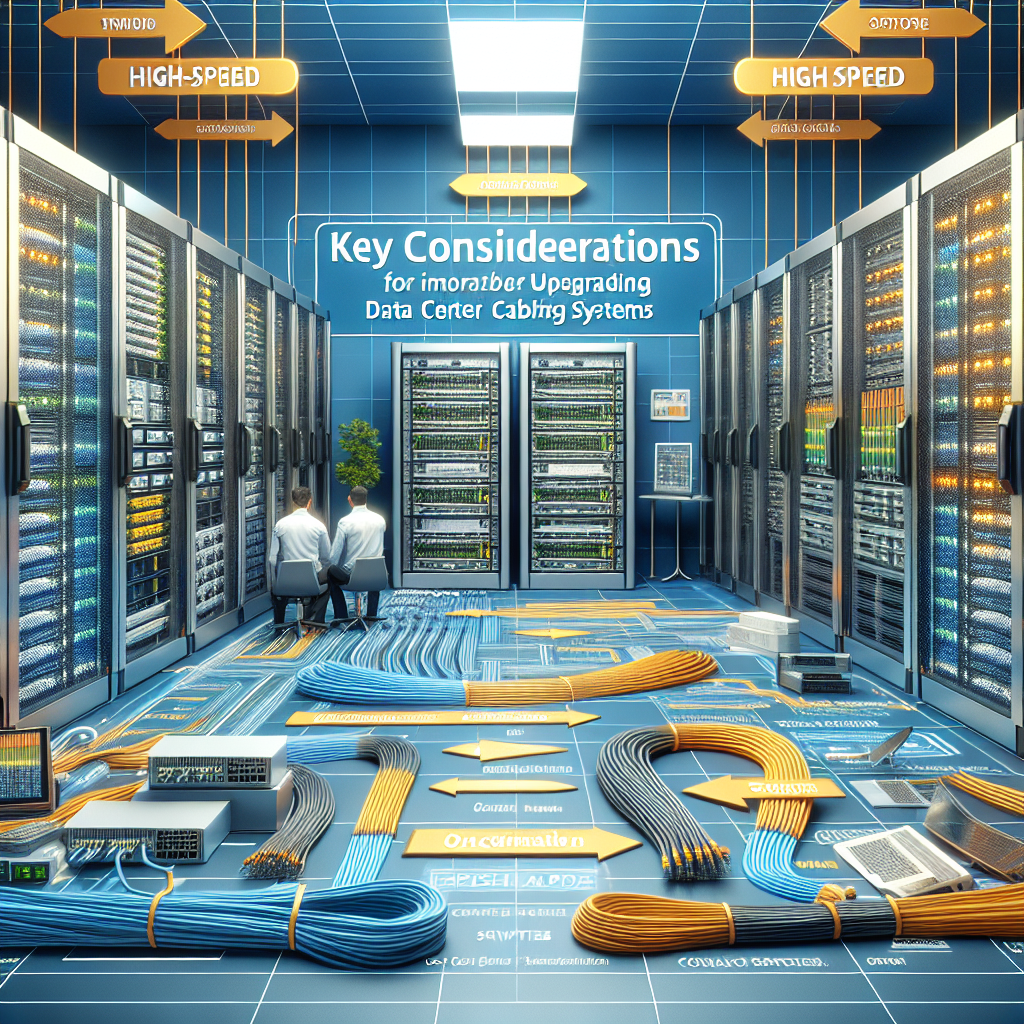Fix today. Protect forever.
Secure your devices with the #1 malware removal and protection software
Upgrading data center cabling systems is a critical task for any organization looking to improve the efficiency and reliability of their IT infrastructure. With the increasing demand for faster data transfer speeds and higher bandwidth capabilities, it’s essential to ensure that your cabling system is up to par. Here are some key considerations to keep in mind when upgrading your data center cabling systems:
1. Assess your current cabling infrastructure: Before embarking on a cabling upgrade project, it’s important to assess the current state of your cabling infrastructure. This includes determining the age, type, and condition of your existing cables, as well as identifying any potential bottlenecks or performance issues. Conducting a thorough audit of your cabling system will help you identify areas that need improvement and guide your upgrade decisions.
2. Determine your bandwidth requirements: One of the main reasons for upgrading data center cabling systems is to accommodate higher data transfer speeds and increased bandwidth demands. Before selecting new cables and equipment, it’s crucial to determine your organization’s current and future bandwidth requirements. This will help you choose the right cabling solutions that can support your data center’s performance needs.
3. Consider fiber optic vs. copper cabling: When upgrading data center cabling systems, you’ll need to decide whether to use fiber optic or copper cabling. Fiber optic cables offer higher bandwidth capabilities and faster data transfer speeds, making them ideal for high-performance applications. However, copper cables are more cost-effective and easier to install, making them a popular choice for smaller data centers with less demanding requirements. Consider your organization’s specific needs and budget constraints when choosing between fiber optic and copper cabling options.
4. Plan for future scalability: As technology continues to evolve, it’s important to plan for future scalability when upgrading data center cabling systems. Choose cabling solutions that can easily accommodate future growth and expansion, such as modular cabling systems that allow for easy upgrades and modifications. Investing in scalable cabling infrastructure will help future-proof your data center and save you time and money on future upgrades.
5. Ensure proper cable management: Proper cable management is essential for maintaining the efficiency and organization of your data center cabling systems. Implementing cable management solutions, such as cable trays, racks, and organized labeling, will help reduce cable clutter, prevent cable damage, and simplify troubleshooting and maintenance tasks. Prioritize cable management when upgrading your cabling systems to ensure a clean and well-organized data center environment.
In conclusion, upgrading data center cabling systems is a complex and critical task that requires careful planning and consideration. By assessing your current infrastructure, determining your bandwidth requirements, choosing the right cabling solutions, planning for future scalability, and ensuring proper cable management, you can successfully upgrade your data center cabling systems to meet the performance needs of your organization. With the right approach and attention to detail, you can enhance the efficiency, reliability, and performance of your data center infrastructure for years to come.
Fix today. Protect forever.
Secure your devices with the #1 malware removal and protection software

Leave a Reply
You must be logged in to post a comment.